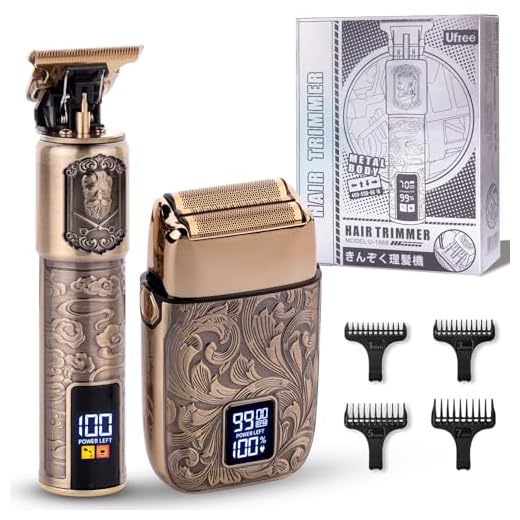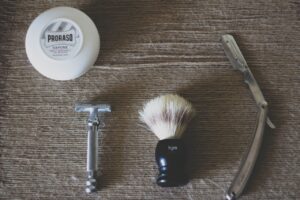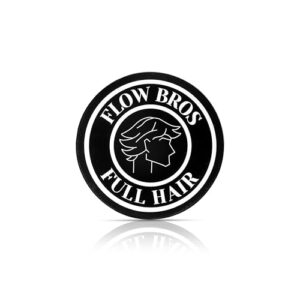Get Your Trimmer Cutting Through That Coarse Beard
A coarse beard can defeat even premium trimmers — hair is up to 100 micrometers thick. Don’t panic. This practical guide quickly shows six easy steps to diagnose, repair, and tune your trimmer so it reliably slices through tough facial hair.
What You'll Need
Why Your Beard Trimmer Pulls Hair and How to Fix It | Beard Care
Inspect and Clean Before You Panic
Could gunk and hair be the real culprits? Spoiler: very often yes.Start with a thorough visual check. Remove any guards and combs, then blow or brush out built-up hair, skin flakes, and dust.
Remove stubborn debris using a small toothbrush or compressed air; example: wiggle the brush into blade slots to dislodge trapped hairs. Use a small screwdriver to open housings only if the manual allows.
Use a cotton swab dipped in rubbing alcohol to remove surface rust and grime. Check for obvious damage:
Take photos as you disassemble to make reassembly easier. If the trimmer has removable blades, take them out and inspect the underside where hair and grime hide — I once restored a clunky trimmer simply by clearing a wad of compacted hair under the blade. Finish by drying all parts thoroughly before reassembly.
Sharpen or Replace Dull Blades
A blunt blade is the silent beard saboteur — sharpening often fixes the whole problem.Disconnect power before handling blades. Test sharpness by gently drawing the (off) blade across a single hair — it should cut cleanly, not tug.
Sharpen metal blades with a fine diamond stone using light, even strokes; or remove the blade and take it to a sharpening service if you’re unsure. Replace stamped or coated blades instead of honing them — many are designed to be swapped.
Ensure replacement blades fit flush and track straight; a crooked blade will skip and pull. Check and replace any worn parts that let the blade wobble:
Buy genuine manufacturer parts to avoid fit issues.
Oil and Lubricate for Smooth Cutting
One drop of oil makes a huge difference — fewer snags, less heat, longer life.Apply lightweight clipper/trimmer oil — not cooking oil — to reduce friction and restore cutting efficiency. Put the trimmer off and drop one or two drops along the top of the blade teeth where they mesh.
Run the trimmer for 10–15 seconds to spread oil evenly, then wipe excess with a soft cloth to avoid sticky residue.
Add a tiny smear of grease to separate gears or pivot points only if the manual shows them; use the specified grease and a toothpick-sized dab.
Clean old, gummy oil first with isopropyl alcohol and a soft brush; hardened residue will gum blades together and make cutting worse.
Check Power: Batteries and Motor Health
Is it the motor or the battery? A weak power source kills cutting force.Charge the battery fully, then test runtime by trimming a thick patch of hair to see if power drops under load. If a cordless trimmer dies after 10–15 minutes, replace the battery.
For corded units, verify outlet voltage with a multimeter or plug in another device; inspect the cord for frays, kinks, or loose plugs and replace if damaged.
If the motor sounds sluggish, stalls, or makes grinding noises, inspect and replace worn motor brushes on brushed motors (look for heavy sparking or short brush length).
For brushless or sealed motors, listen for overheating, high-pitched buzzing, or unusual vibrations—these often mean internal wear and need professional service.
Clean vents/fans with compressed air and lightly lubricate accessible motor bearings, but do not open sealed motors if it voids the warranty.
Adjust Settings and Use Better Technique
The right guard and a smarter stroke can turn an average trimmer into a precision tool.Choose a shorter guard or remove the guard for a closer pass if your trimmer can handle it. Start with a longer guard (for example 3–5 mm) and finish with no guard for a clean edge.
Trim when hair is dry and brush the beard first to remove tangles. Trim with short, deliberate passes and go against the grain for a cleaner cut. Use your free hand to stretch the skin and keep hair taut.
Take thin layers rather than huge passes and increase pressure gradually to avoid jamming blades. Use a higher speed for very dense sections. Replace or adjust comb tension if hairs are slipping instead of entering the blades.
Ongoing Maintenance and When to Seek Professional Help
Maintain like a pro, and your trimmer will last; know when it's time for repair or replacement.Create a simple routine: clean the blades after each use, oil weekly (or follow the manual), and replace blades every 6–12 months based on wear. For example, if you trim 3×/week, expect closer to 6 months.
Recharge batteries properly: avoid deep-discharge and constant trickle-charging unless the manual allows it. Store the trimmer in a dry place and snap on the protective blade cap.
Consult the manufacturer or a small-appliance repair shop; fix minor parts or brushes, but consider replacing units with sealed brushless motor failures. Regular care prevents most failures and keeps cuts tidy.
You’re Ready to Conquer That Coarse Beard
Follow these six steps to restore cutting power, extend trimmer life, and enjoy smoother, faster trims. Try them, share your results, and join others in mastering a sharp, confident beard.













Good steps. I found step 4 (check power) was the kicker for me — my lithium cells were dying even though the LED said ‘ok’. Replaced batteries and it’s back to normal.
Same here — thought the charge indicator was honest. Turns out it wasn’t. Good catch!
Thanks for the tip, James. Battery health can be misleading with some indicators. If you want, tell us the trimmer model and battery type and we can suggest ways to test battery capacity.
I tried to sharpen blades at home following a YouTube hack and ended up with a worse haircut than my ex did 😂
Moral: either learn to sharpen properly or just replace. This guide’s bit about knowing when to seek pro help is spot on.
Also, lube is not optional — people be like ‘does it even need oil?’ yes it does. Your trimmer is not a cactus.
Pro sharpening services are cheaper than I thought. Might be worth it if the trimmer is a good model.
Totally agree. I tried a kit once and ruined the angle. Replaced and never looked back.
Same — I replaced blades after a botched sharpening attempt. Life is too short for jagged edges.
Hah, the DIY sharpening rabbit hole is real. If you want, we can add a short how-to on basic handheld sharpening and when to quit and buy new blades.
Question: For those who’ve replaced blades, did you go for OEM or third-party? I’m leaning OEM but man they’re pricey. Also, any recommended oil types? The guide mentions oil but not specific brands.
I bought a 3rd-party set that was surprisingly good — saved money and didn’t notice a drop in cut quality. Check for stainless/hardened steel in specs.
Good questions, Daniel. OEM blades usually guarantee fit and performance but 3rd-party can be decent if reviews back them up — look for hardened steel and return policies. For oil, lightweight clipper oil (100% mineral oil) is ideal; avoid heavy lubricants like motor oil. We’ll add brand examples in an update.
For oil I use the bottle that came with my old trimmer — the tiny drop is enough. No need to go wild with product hunting.
Okay real talk — coarse beards are bullies. This guide hit all the practical stuff:
1) Cleaning = immediate improvement. Duh.
2) Dull blades = the silent murderer of grooming confidence.
3) Oil like you mean it, otherwise friction eats your motor.
4) Technique matters: slow against the grain for thick patches.
5) Maintenance schedule — I set a calendar reminder every month now and it’s been consistent.
I wish there was a quick checklist printable for the maintenance part.
I use a little sticky note on my mirror. Not as fancy as a printable but does the job 😅
You gotta talk to your beard too. Kidding. Kind of. 😉
Great suggestion, Marcus. A printable checklist is a handy idea — we’ll draft one with the monthly/quarterly tasks and a simple troubleshooting flowchart.
Agree on going slow across thick parts. Rushing = tugging = regret.
A printable checklist would be perfect for gifting to roommates lol. ‘Don’t Murder My Trimmer’ checklist.
This guide actually saved my weekend — thank you!
I cleaned the head like step 1 suggested and the difference was wild. My trimmer went from chewing to slicing in like 2 minutes.
Bonus tip: I also ran a small brush through the motor vents (gentle!) and it seemed happier.
Only thing I skipped was sharpening — I bought a cheap replacement blade set and it’s been smooth since.
Would love to see a follow-up on which blade brands are worth the $$.
Glad it worked for you, Hannah! We’re planning a follow-up that compares a few popular blade brands and long-term durability — stay tuned. If you remember which blade set you bought, drop the name here; others will want to know.
Yep, vents matter more than people realize. Happy trimmering 😁
Nice! Which replacement set did you get? I’m stuck between two and I keep overthinking it 😂
Short and sweet: Step 3 (oil) fixed a weird buzz my trimmer had. Didn’t realize how dry the blades were. Also — don’t forget to reassemble the guard properly after cleaning or you’ll get weird uneven cuts.
Nice catch on the guard reassembly — that can cause uneven cutting or extra pressure on the motor. Thanks for pointing it out!
Totally — had a guard upside down once and couldn’t figure out why it looked like I was trying to sculpt hills.